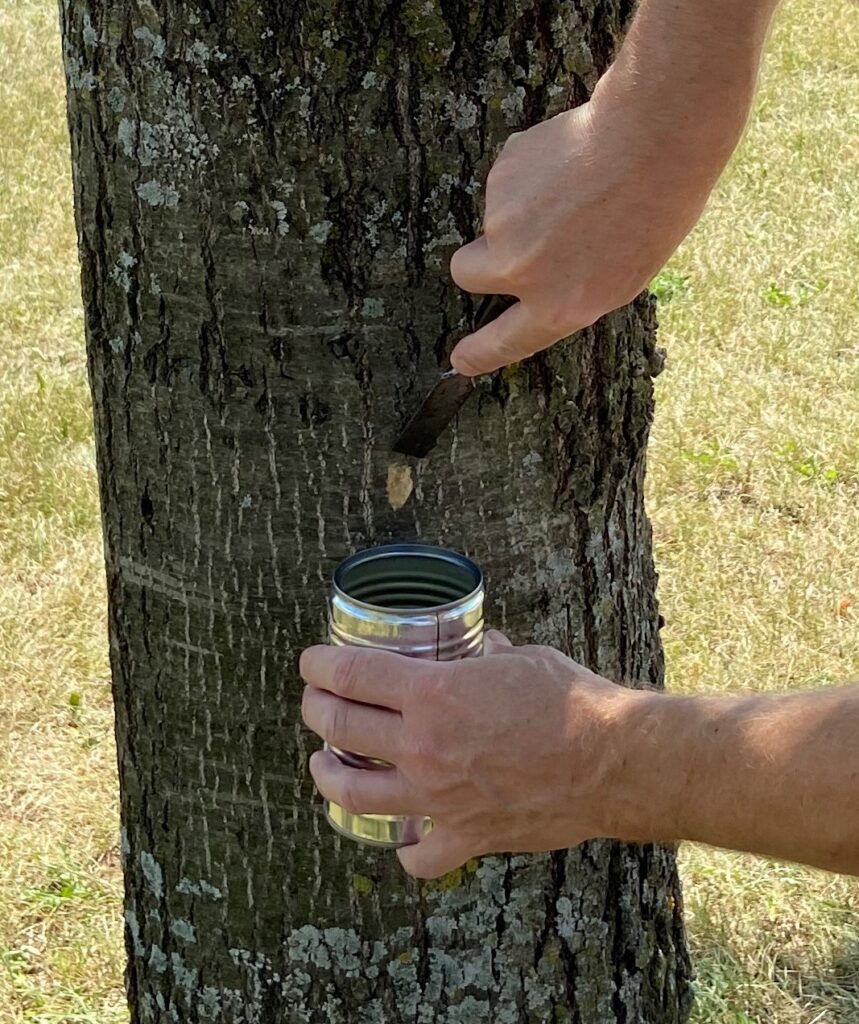Article By: Bill McNee, DNR Forest Health Specialist, Oshkosh
bill.mcnee@wisconsin.gov or 920-360-0942
In 2021, gypsy moth populations increased for a second consecutive summer due to favorable weather conditions. Populations typically increase with an average or mild winter, below average spring precipitation and above average May through June temperatures.
Regional variation in weather can result in significant differences in populations. If weather conditions are favorable again in 2022, the most noticeable increase in caterpillar numbers would likely occur in southern counties, where conditions were driest during this past spring and summer.
Populations experience the fastest growth rate and are first noticed on:
- Dry sites with sandy soil and abundant oak
- Mowed lawns with preferred tree species (oak, crabapple, birch, etc.)
- Large oaks (bur, in particular) with rough bark, especially on or adjacent to mowed lawns

Gypsy moth egg masses found in Walworth County in fall 2021.
Photo Credit: Gypsy moth egg masses KMSU
This fall is an excellent time to look for and dispose of egg masses produced by adult moths during the summer. Gypsy moth egg masses are tan-colored lumps about the size of a nickel or quarter that are found on trees, buildings and other outdoor objects. They may also be found in protected places such as firewood piles and birdhouses. The egg masses will not hatch until next spring.
When egg masses are found, treat or remove those safely within reach. Accessible masses can be sprayed with horticultural oil (available online or at many home and garden centers) or gently scraped into a container of soapy water to soak for a few days before being discarded in the trash. Do not use motor oil or other lubricants, as these can harm the tree and be a pollutant. Look to treat or remove “fresh” egg masses produced during the current summer. Newer egg masses will feel firm and appear darker in color than older egg masses, which appear faded, feel spongy and do not contain viable eggs.

Scraping a gypsy moth egg mass into a can of soapy water.
Photo Credit: Scraping egg mass KMSU
Surveying for egg masses helps property owners predict gypsy moth populations for the following summer and to take action to treat or remove. More egg masses are usually seen if property owners wait until leaves have fallen from the trees. Contact an arborist or forester if many masses are present.
Visit gypsymoth.wi.gov for information on egg mass oiling and removal, physical controls and insecticide application to individual trees. You’ll also find an aerial spray guide that is helpful to landowners and groups interested in using this tactic to protect larger areas of high-value host trees.
